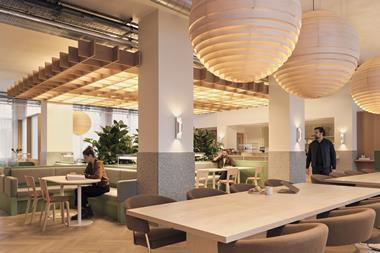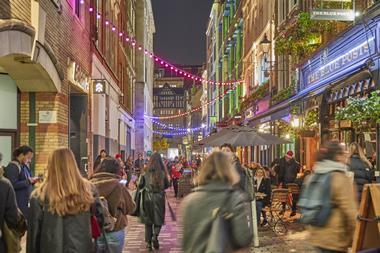In the wake of the Covid-19 pandemic, London’s cultural scene is more at risk than ever. Museums, theatres and art galleries were forced to close their doors for nearly 18 months, creating extreme uncertainty for the industry and those whose livelihoods depended on it.

Despite increased footfall and a good turnout from audiences since the end of the latest lockdown, cultural venues in London still face ongoing uncertainty. Further restrictions are still possible.
The impact of these on venues could lead to them downsizing, making redundancies and, in some cases, permanently closing their doors. This would drastically affect London’s cultural scene.
For years, businesses have been patrons of the arts, but now more than ever they have a crucial role to play. New working habits and a more permanent shift to working from home mean that communities expect their public spaces and local amenities to support people’s health, happiness and wellbeing. These are the core values of placemaking, which also has the potential to play a crucial role in supporting the arts.
At Ballymore, we take our responsibility as a placemaker very seriously, putting quality of life and a connection to arts and culture at the core of our work. This has included developing new headquarters for English National Ballet (ENB) on London City Island, our project just south of Canary Wharf.
We must appreciate the significance of the arts to our quality of life
Facilities include a production studio with flytower, where ENB can rehearse for its productions with full sets and lighting. It includes seven rehearsal studios, a costume workshop with dye room and shoe room, two learning and engagement spaces, a hydrotherapy pool, a gym and Pilates studio, a green room and changing rooms plus a café and exhibition space.
We recognised from early on the benefits that ENB could bring to the development, beyond simply making the flats more attractive to potential residents.
Our developments are also home to a number of artists, cultural organisations and independent craftspeople/retailers. Born out of the union of two families, Cartographie Chocolate in London City Island is one such example. London City Island has established a rich and diverse cultural scene, bringing together film, dance and modern art, all in this historic Docklands location. It is crucial that we work with talented creatives to inject culture into our places.
Community role
As an industry, we need to make art and cultural venues integral to property companies’ placemaking strategies and emphasise the role they play in the community. Audiences, performers and residents need to know that they can rely on us to support them through these uncertain and challenging times.
We must appreciate the significance of the arts to our quality of life. London’s cultural offering is made up of treasured national assets and is part of what sets this city apart.
We should all be grateful for what ballet, theatres, museums, art galleries and other artistic talents bring to our society.
We have been pleased to support them especially at this difficult time.
Only in effective placemaking will we create places in which people, business, culture and wider society can thrive.
John Mulryan is group managing director of Ballymore






























No comments yet